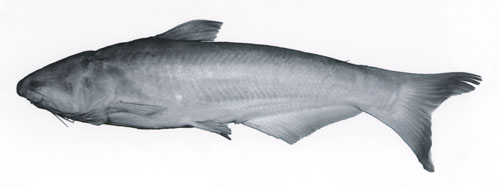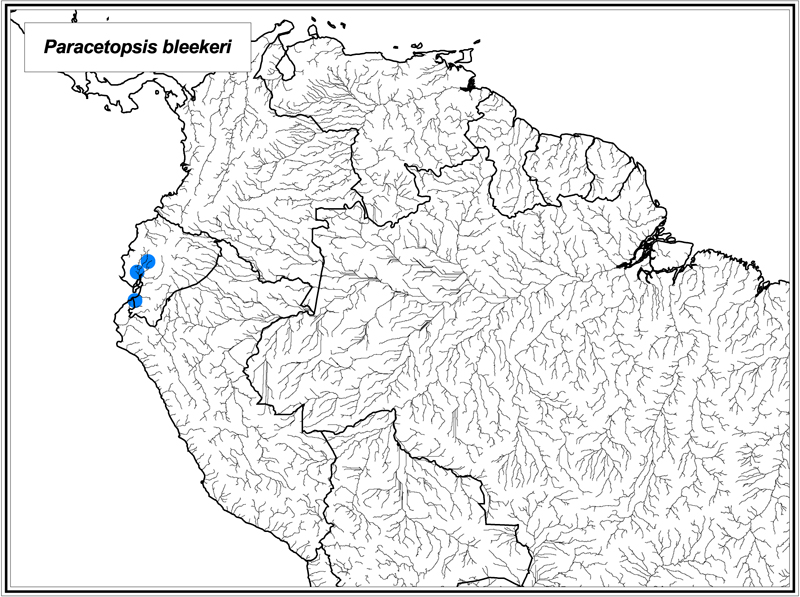
Reproduced from Vari, Ferraris and de Pinna (2005).
Paracetopsis bleekeri Bleeker,1862
Identification: Paracetopsis bleekeri is distinguished from all other species in the Cetopsinae with the exception of P. atahualpa and P. esmeraldas by the combination of the possession of a vomerine tooth patch with more than one row of teeth and a medial separation of the contralateral components of the patch. Paracetopsis bleekeri differs from P. atahualpa in the relative length of the pelvic fin (tip of fin falling short of the vent versus completely overlapping the vent, respectively), in the pigmentation on the operculum (lacking an opercular pigmentation patch versus having a distinct patch of dark opercular pigmentation, respectively), the overall coloration of the head and body (light versus dark, respectively), the extent of the medial gap in the vomerine tooth patch (with a distinct medial gap between the contralateral components of the tooth patch equivalent to the width of three or four vomerine teeth versus with a limited medial gap equivalent to the width of one or two vomerine teeth, respectively), and to a degree in the number of total vertebrae (50 in all specimens versus 47 to 50 with 49 most common and 50 in only 1 of 21 radiographed specimens, respectively).Paracetopsis bleekeri differs from P. esmeraldas in the pigmentation on the operculum (lacking an opercular pigmentation patch versus having a distinct patch of dark opercular pigmentation, respectively), in the extent of the medial gap in the vomerine tooth patch (separated by a distinct medial gap between the contralateral components of the tooth patch equivalent to the width of three or four vomerine teeth versus a limited gap equivalent to the width of one or two vomerine teeth, respectively), and in the mode and to a degree in the range of the caudal vertebrae (34 to 38 with 36 most common versus 37 to 40 with 38 most common, respectively). Maximum size: 246 mm SL.
Range: Paracetopsis bleekeri is only known from the Pacific Ocean versant R�o Guayas and R�o Santa Rosa basins of southwestern Ecuador.
Information from Vari, R. P., C. J. Ferraris Jr. & M. C. C. de Pinna. 2005. The Neotropical whale catfishes (Siluriformes: Cetopsidae: Cetopsinae), a revisionary study. Neotropical Ichthyology 3:127-238.
